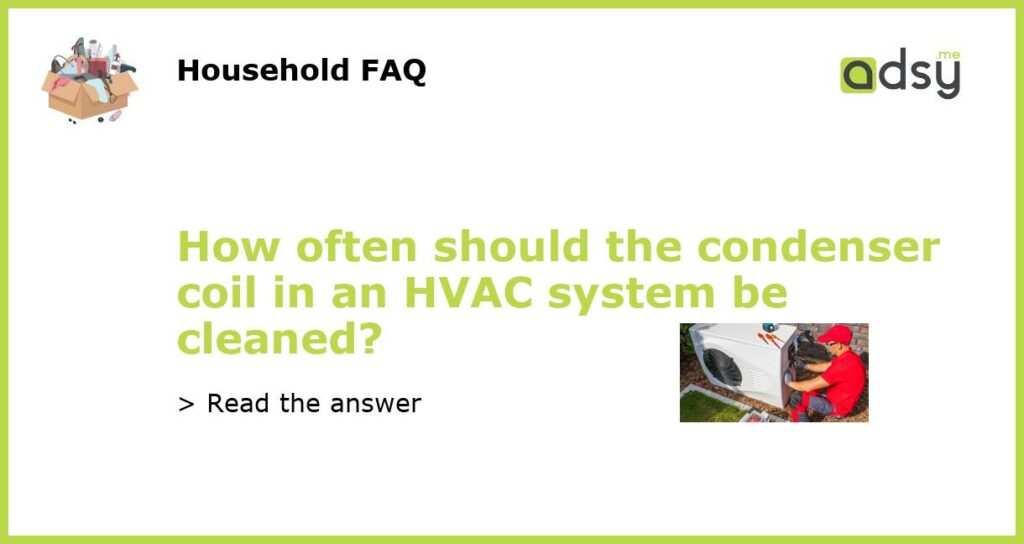Introduction
Understanding how often to clean the condenser coil in an HVAC system is crucial for maintaining the efficiency and longevity of the system. The condenser coil plays a vital role in the cooling process of an HVAC system, and regular maintenance is necessary to prevent any potential issues.
The importance of cleaning the condenser coil
Cleaning the condenser coil is an essential part of HVAC system maintenance. Over time, the coil can accumulate dirt, dust, and debris, which can hinder its ability to efficiently transfer heat. When the condenser coil is dirty, the system has to work harder to cool the air, resulting in higher energy consumption and increased wear and tear on the unit.
Regular cleaning of the condenser coil not only improves the system’s energy efficiency but also helps prevent costly breakdowns and extend the lifespan of the unit. Keeping the coil clean allows for optimal airflow and heat transfer, ensuring that the HVAC system operates at its best.
Factors to consider for the cleaning frequency
The frequency of cleaning the condenser coil depends on various factors. These factors include the location of the HVAC system, the environmental conditions in which it operates, and the level of usage.
If the HVAC system is located in a dusty area or near a construction site, it may require more frequent cleaning. Similarly, if there are trees or shrubs nearby, the system is more likely to be exposed to leaves, pollen, and other debris, requiring more regular maintenance.
The local climate also plays a role in determining the cleaning frequency. If the area is prone to high levels of pollution or experiences heavy seasonal pollen, more frequent cleaning may be necessary.
Lastly, the usage of the HVAC system should also be considered. Commercial systems that are constantly running may require more frequent maintenance compared to residential units that are used intermittently.
Recommended cleaning intervals
While the cleaning frequency can vary depending on the factors mentioned above, a general guideline for cleaning the condenser coil is once per year.
For residential systems in average environmental conditions, a yearly cleaning should be sufficient to maintain performance. However, it is still essential to monitor the coil’s cleanliness throughout the year and schedule additional cleanings as needed.
Commercial systems typically require more frequent cleaning due to their constant usage and exposure to a higher level of contaminants. Quarterly cleanings may be necessary for these systems to ensure optimal performance and prevent any potential breakdowns.
Signs that the condenser coil needs cleaning
While the recommended cleaning intervals provide a general guideline, it is important to be aware of signs that indicate the condenser coil may need cleaning sooner than the scheduled maintenance.
One of the most noticeable signs is a decrease in cooling performance. If the HVAC system is no longer maintaining the desired temperature or is taking longer to cool the space, it may be a result of a dirty condenser coil.
Visual inspection is also crucial in identifying the need for cleaning. If the coil is visibly covered in dirt, dust, or debris, it is a clear indication that cleaning is required. Additionally, if there is a noticeable decrease in airflow from the outdoor unit, it may be a sign that the coil is partially blocked and needs to be cleaned.
Regular maintenance and cleaning of the condenser coil are essential for maintaining the efficiency and longevity of the HVAC system. By adhering to the recommended cleaning intervals and being vigilant for any signs of dirt or blockage, homeowners and commercial property owners can ensure that their systems continue to operate at peak performance.

